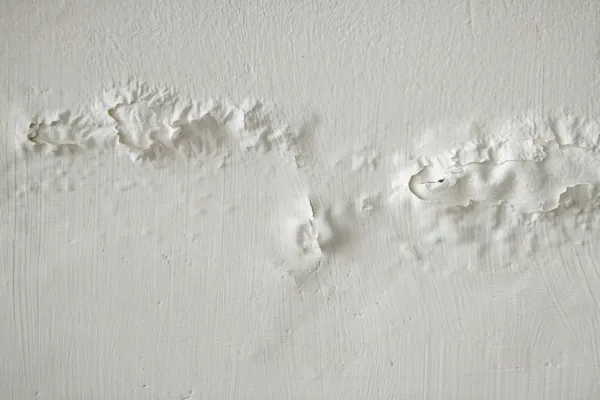Subsidence claims have been growing in recent years, with some firms seeing a huge 480% year-on-year increase. At first, it was thought the increase was caused by poor construction of the buildings, but many claims have been due to the extreme hot and dry weather the UK has been seeing throughout the summer which affects the soil under the property.
Subsidence can not only be expensive to resolve but it can skyrocket insurance premiums and affect the saleability of a property. A survey showed that larger claims were costing homeowners approximately £30,000 with some even topping £500,000. The last time a jump in claims was seen near these levels was in 2018 when a record total of 23,000 claims were made, amounting to £145 million, again due to a particularly hot summer.
As one of the leading online estate agents in the UK, SOLD.CO.UK has put together this guide to help you understand your options if your home is affected by subsidence. But first, we need to know exactly what subsidence is.
What is subsidence?
Subsidence happens when the ground under your house sinks or caves in. It is most problematic when the ground underneath a house is sinking at different rates as it causes the foundations of a property to become misaligned, threatening the structural integrity of the building.
It can be especially prevalent in London and the South East where the soil has a lot of clay. The clay expands in wet weather and then reduces when it dries out in warm and dry weather. This can amplify the issue of subsidence.
What are the signs of subsidence?
Signs of subsidence include cracks appearing on the walls. You may also notice the floors are sloping at an angle.
However, cracks in the walls, especially in older properties is not always a sign of subsidence. Cracks that are related to subsidence usually:
- Appear close to a door or window
- Are wider than 3mm
- Are visible inside and outside
- Spread diagonally across a wall
Other signs to be aware of include:
- Rippled wallpaper
- Doors and windows sticking when opening and closing
- Cracks appearing between a property and extension
- The home appears slanted or wonky
Your home could be struggling with subsidence and you’d never know, as it can lay dormant for years until signs appear. Your home could be more at risk if it is built on clay, is surrounded by trees, or has experienced a prolonged hot and dry summer.
Clay shrinkage and soil erosion accounted for 90% of claims. However, a survey showed that 55% of homeowners were not aware of what their house was built on, leading to the possibility of an increase in this claim percentage as more people become aware of subsidence.
Research carried out by LV= showed that some claims are made without the customer being fully aware of what constitutes subsidence. For example, bulging floorboards, damp patches appearing, tilting large trees outside of the house, and a musty odour are all often assumed to be related to subsidence but aren’t.
How much does subsidence devalue a property?
Issues with subsidence can affect the selling price of a property by around 20%. On a £300,000 property this would be a decrease of £60,000. This percentage is on a sliding scale depending on the severity of the subsidence.
What is historical subsidence?
It is not impossible to sell a home that is currently, or has, experienced subsidence. You will need a surveyor to visit your home and assess the structure and foundations. The surveyor will be able to distinguish if the subsidence is historical or ongoing. Our guide helps show you everything you need to know about a property surveyor and the surveys carried out on your home.
Whether the subsidence is historical or ongoing will affect the next steps:
- Historical subsidence means that any continued movement is unlikely, and no improvements need to be made.
- Ongoing subsidence means work needs to be carried out to resolve the issue before selling.
If you are selling a property with historical subsidence you will need to disclose previous issues with the estate agent. They will then make any prospective buyers aware; be prepared that it may take longer to sell your home as subsidence can be off-putting, even if historical. You may even have to lower your asking price if the subsidence was recent.
If subsidence is historic, you will need to provide evidence of past insurance claims and specifications of work to show how the problem was resolved at the time. The buyer may also ask for a Certificate of Structural Adequacy.
Does underpinning devalue property?
Underpinning is an action that is used to strengthen the foundation of a property and is a solution to subsidence. You can sell a property that has been underpinned as long as it has been completed to a good standard and there are no ongoing structural or subsidence issues.
Underpinning can devalue a property by around 20-25%. It can be difficult to find a buyer for an underpinned property, as individuals can be put off by the risk of future subsidence, hence the reduction in value.
At SOLD, we offer a house value calculator by postcode and help you move up the property ladder easily.
How much does underpinning a house cost?
The outlay for underpinning will be determined by the job involved and the type of underpinning required. Piling is the most expensive type and is only used for very deep foundations. Mass concrete fill and beam and base are the more common methods. You will find what type is best for you through your surveyor.
Just like any structural work, the cost of underpinning will vary between properties and the scale of the subsidence issues. When obtaining quotes, the size of the job, the duration, property access and whether the subsidence has caused aesthetic or structural issues will be taken into consideration.
Below, we have highlighted the average cost for each underpinning method per square metre:
| Underpinning Type | Average Cost per m2 |
| Mass concrete | £1,500 |
| Beam and base | £2,000 |
| Piling | £2,600 |
Factors such as the location of your property, the size and type of property, and whether the property is built on a slope or flat surface will all affect how much underpinning costs.
Be aware there may be additional costs, such as a structural engineer inspecting the property regularly or paperwork needing completing to be submitted for planning permission purposes.
Below are the average costs for some of these additional charges:
| Job Description | Cost |
| Structural engineer (per hour) | £70 |
| Party wall agreement (per neighbour) | £700 |
| Building control application fee | £200 |
| Planning permission | £330 |
Is subsidence covered by house insurance?
Rectifying subsidence can be expensive, particularly if underpinning is needed. Cases of subsidence are complex when it comes to insurance. However, subsidence is covered by most house insurance policies, but usually only if your home has never suffered with subsidence in the past.
Depending on your coverage, insurance should cover all damage and the cost of repairing items and alternative accommodation. Often underpinning is only covered by specialist insurance packages but you will need to liaise with your provider should the worst happen.
If your home has irregular features or is potentially at risk from riverbank or coastal erosion, you may need specialist insurance which also covers damages outside your home.
If you renew your home insurance with the same insurer after you have made a claim for subsidence, you will likely see higher premiums. They may also only offer a policy that excludes cover for any future subsidence work.
According to GoCompare, the average cost of insuring a house with a historical subsidence is £358, compared to an average of £191 for a house without it.
How to sell a house with subsidence
You can sell a house with ongoing subsidence, but you should be prepared to take a serious drop in the asking price. This allows the buyer to undertake the work that needs to be conducted to rectify the subsidence or settlement issue.
Furthermore, properties will likely need to be purchased by cash buyers as mortgage lenders are unlikely to touch properties with ongoing subsidence as they are uninsurable in their present state.
Selling an underpinned property
As we have previously touched upon, you can absolutely sell your property if it has been underpinned. When you sell, you will need to declare that your property has been underpinned. Failure to do so can result in legal complications as the buyer will be protected by The Misinterpretation Act 1967.
Selling an underpinned property means you need to be clear and transparent with your estate agent and with any potential buyers. When you sell, it is helpful to provide your insurer’s name so that the new occupants can continue under the same cover if they so wish. This can be useful going forward if another subsidence claim needs to be made in the future.
A positive for a prospective buyer is that with the house now underpinned, the foundations, are, if anything, stronger than houses with no subsidence issues. As a seller though, you can still expect to lose an estimated 20-25% in property value.
What impact does underpinning have on a mortgage?
Underpinning does not usually influence securing a mortgage. Your estate agent will be able to give peace of mind to any interested buyers with this information. Your property survey will be able to highlight that the underpinning has been completed to a high standard and your home has no ongoing structural issues and is not at risk of any more subsidence.
Only houses with current subsidence issues will be refused a mortgage. This is why you should carry out fixes to the structural problems before you come to sell.
The only other scenario where failure to obtain a mortgage may happen is related to insurance. If a property is unable to secure house insurance, then a lender will not be able to give a mortgage. This is because the grounds for a mortgage are dependent on the property being able to be insured. However, as mentioned, if the property is sound and there are no issues from the survey this will not be a problem.
If you are unsure of what type of mortgage is right for you, then simply read our beginner’s guide to mortgages to help you on your way.
Does subsidence affect house price?
As we have touched upon, subsidence does affect house price, up to 20-25% in some circumstances. However, historical subsidence from 10 years ago that has been treated, compared to new subsidence that hasn’t been fixed, is going to have less of an impact on the value of your home comparatively.
Selling a house with subsidence with SOLD.CO.UK
If you’re struggling to sell your house online, or via the high street and it has ongoing or historical subsidence, get in touch with SOLD.CO.UK. We are an online estate agent offering customers a fully managed route to sale that is fast, free, and fair.
If your house has subsidence, we can help. You can get a free instant valuation to get the ball rolling or contact us to speak to the team about your house sale.
















